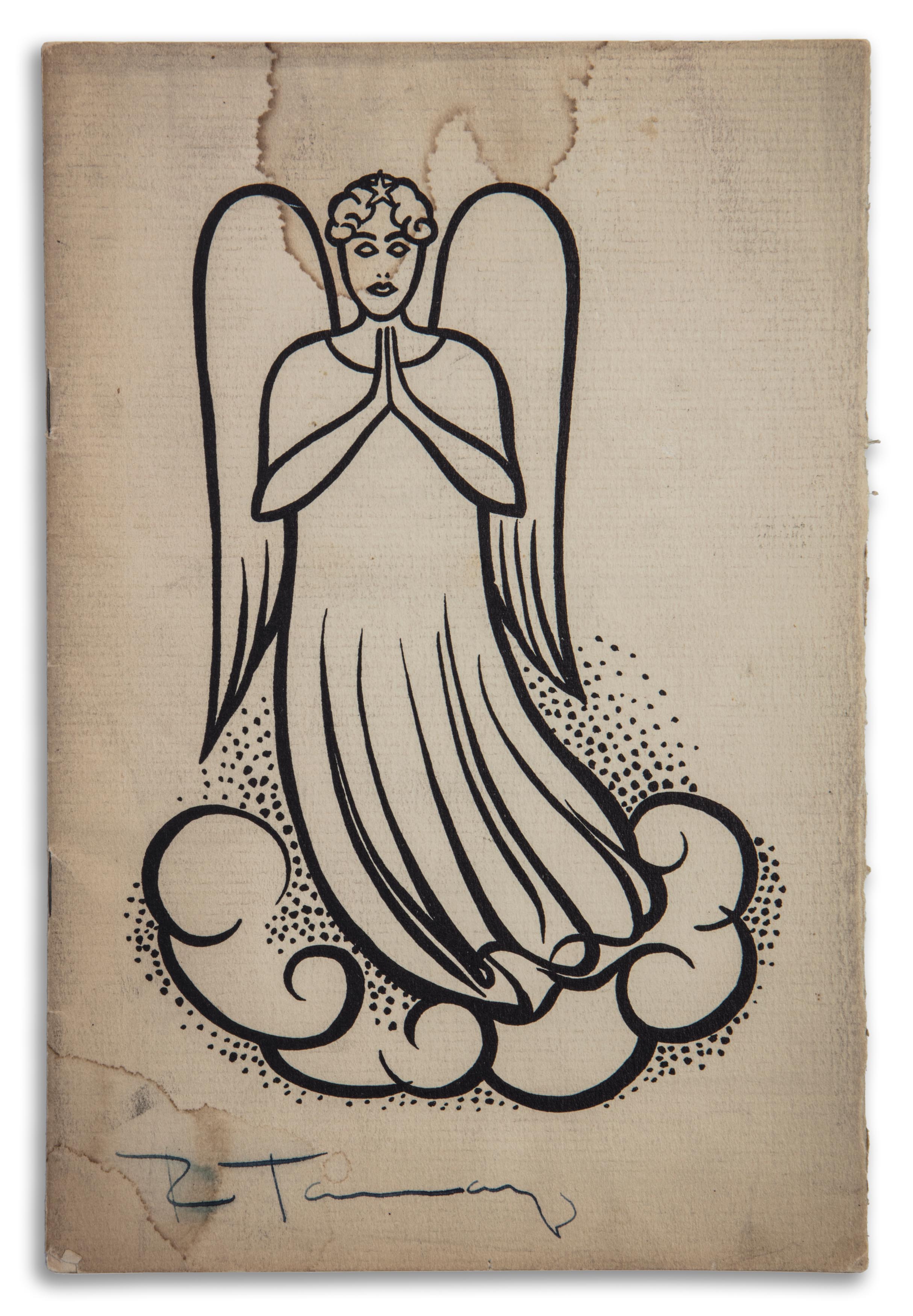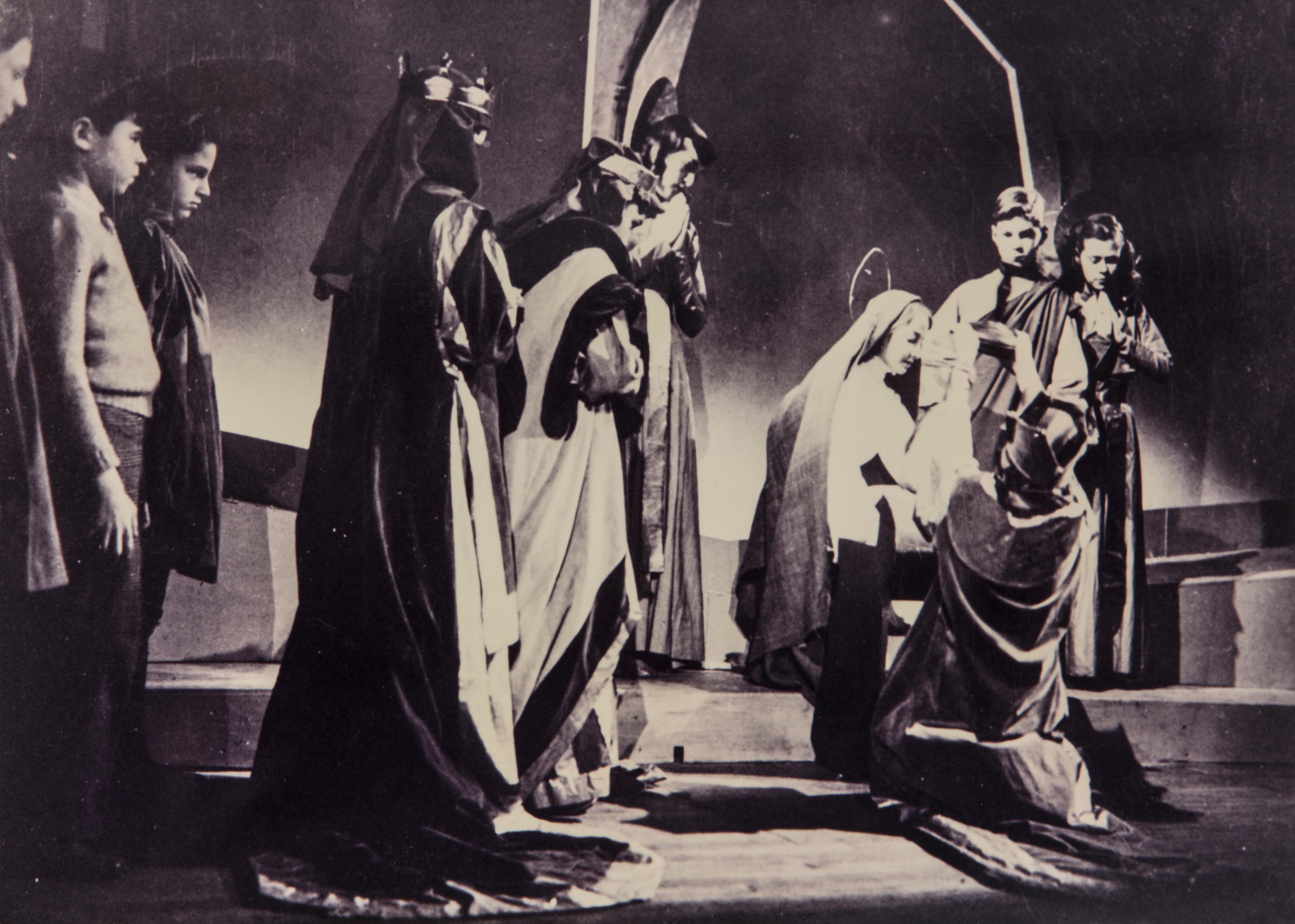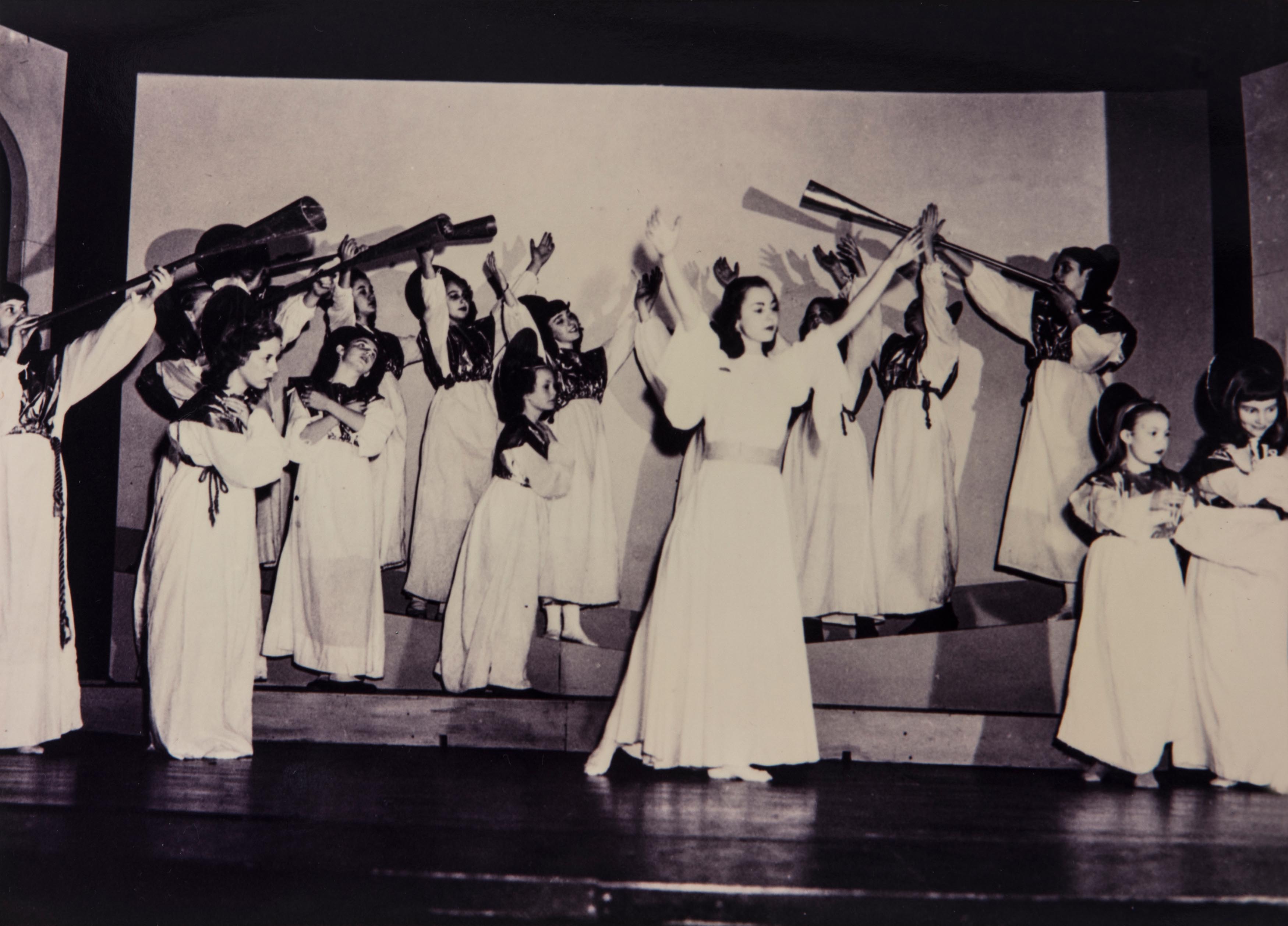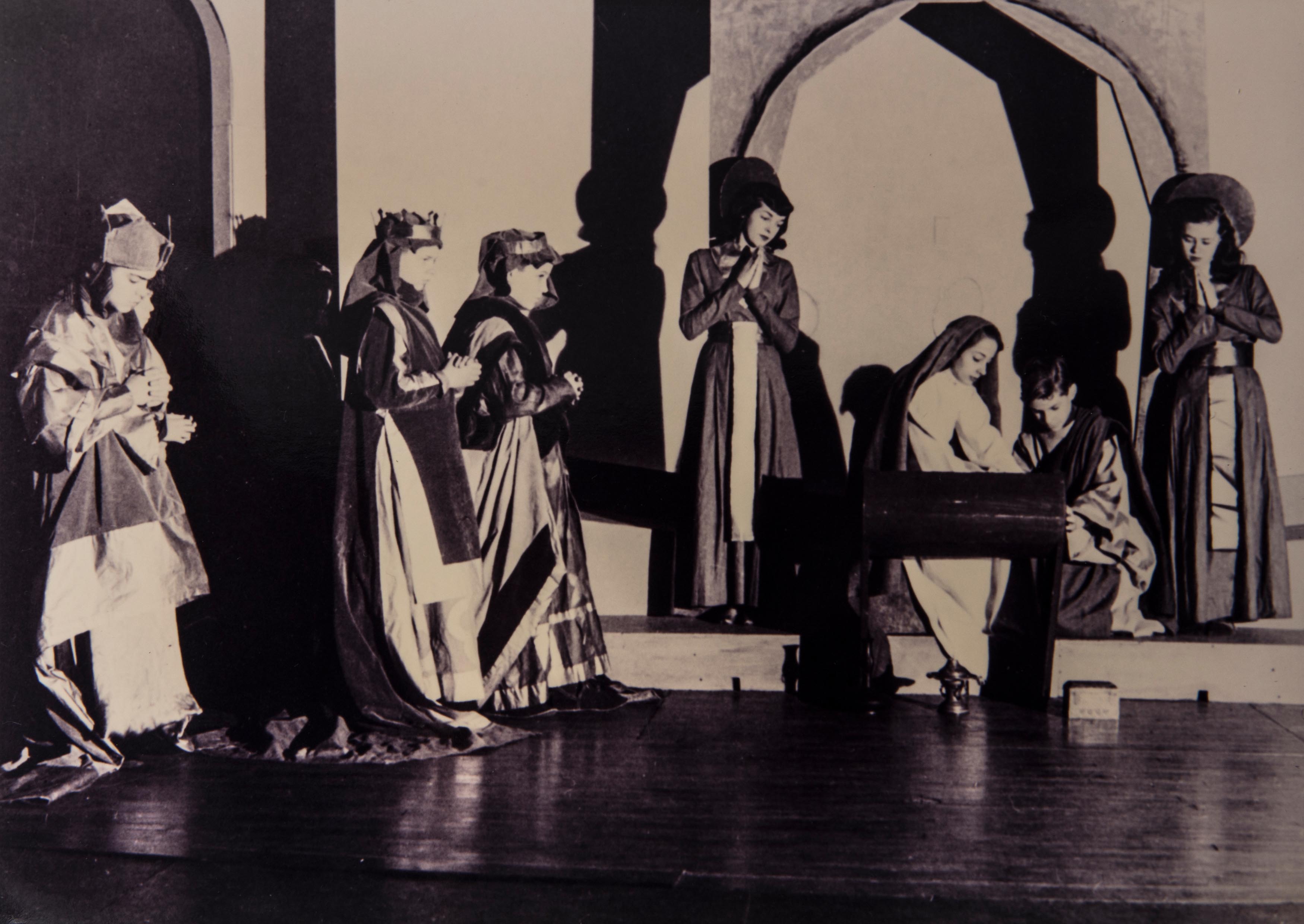12. The Dalton Christmas Pageant

Students loved the Christmas Pageant because it was a cultural ritual and a tradition. Photos of early Christmas Pageants and a Nativity program cover illustrated by renowned artist Rufino Tamayo, then a Dalton teacher.

The Pageant started in the early days in the West 72nd Street building featuring angels with cardboard halos and gold oil cloth costumes against a white wall in a smallish room. Elizabeth Seeger always felt that the meaning of the Pageant to Miss Parkhurst was not a celebration of Christmas but the worship and celebration of the child. The students loved it because it was a cultural ritual, a tradition, and more about a legend than a religious rite. Seeger taught history at Dalton from 1922-1955 and also was high school director.
Eventually Miss Parkhurst’s Pageant grew into a very large annual event with about a month of rehearsals. The scenery changed each year culminating in 1940-41 when Rufino Tamayo painted Mexican angels on canvas that hung over the balcony’s edge. The music was quite limited and heavy on “Hark the Herald Angels Sing.” Tamayo taught art at Dalton and went on to become a well-known painter, a leader of the Mexican painting Renaissance.
The Pageant then went Renaissance. The cast was selected from the top grades from each division. The Nursery provided the baby angels, the fourth grade provided angels and shepherds, the eighth grade provided kings and angels, and the seniors would provide the major angels, readers, and Mary. Under Harold Aks, Dalton chorus conductor for almost 50 years, the Pageant took a giant leap forward musically. The Pageant incorporated Old and New Testament in the script. I directed from 1953-1971. When Dalton went coed we had our first male shepherd and angels. The school’s expansion took steam out of the Pageant — too many performances and not all in a grade could be in it — and its run ended in 1972.
—Anne MacKay ’45, Dalton Theater teacher (1953-1972)


